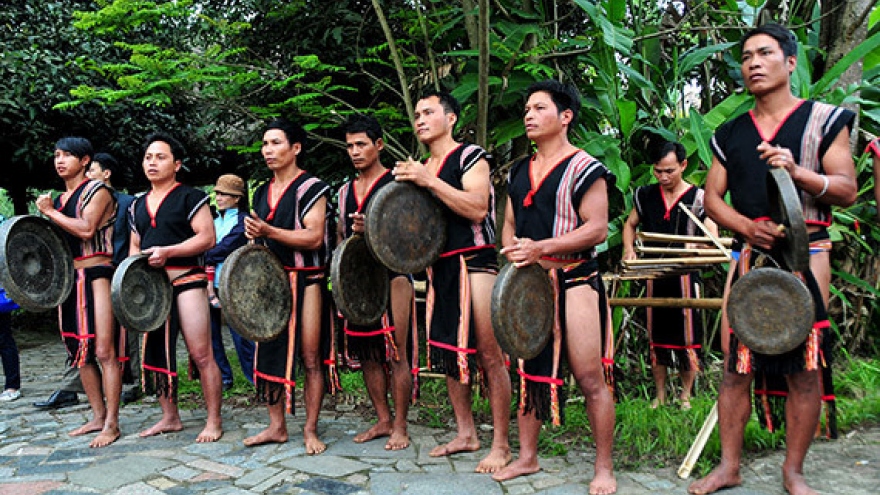Xo dang epics preserved for future generations
VOV.VN - The Ede people’s Khan, the M’nong group’s Ot ndrong, and the Ba Na people’s Ho Mon are the first that come to mind when discussing epics of Vietnam’s Central Highlands. People are less familiar with the Xo dang group’s epics.
 |
| Artisan A Ar of Xo dang ethnic group in Kon Tum province |
First introduced to the public in 2001, these epics have been published by the Vietnam Academy of Social Sciences in a collection called “The Central Highlands’ epics”.
80 year-old A Ar of Kon Tun province’s Dac Ha district said the Xo dang epics mainly center around Dam Duong, a character that represents the Xo dang's lives and relationships. A Ar is the author of a chapter on Xo dang epics in the collection “The Central Highlands’ epics”.
"I remember I was 12 when we first heard A Ar singing epics. We were all very interested as that was the only way for us to get to know our traditional culture," said villager A Kay.
A Ar was taught the epics about Dam Duong by his uncle when he was only 8. There are many epics about Dam Chuong like “Dam Duong turned into a tiger”, “Dam Duong as an old man”, “Dam Duong forced to become a slave”, and “Dam Duong saves lady Bar Ma.
"I have loved singing epics about Dam Duong since I was very little. I was taught by the village elders and learned them all by heart. I sang whenever I could – even when I was doing other jobs. I often sang for my friends when we gathered in the village’s communal house. People love the stories about Dam Duong. They came early and stayed late to hear my singing," A Ar told VOV.
The Xo dang people believe a person must be blessed by the Gods to be able to sing epics. In addition to singing, A Ar also acts out the character’s different movements and expressions while performing the epics.
"A performer must be able to imitate and reflect his characters. When I see the audience cry or laugh while listening to my singing, I know it has touched their hearts," elaborated A Ar.
Researchers admire A Ar for his ability to perform an epic non-stop for 8 hours, according to Associate Professor, Dr. Vo Quang Trong, Director of Vietnam’s Museum of Ethnology.
"We can’t deny the important factor of hereditary. Most artisans were born into families renowned for their artistic talent. Artisan A Ar is a case in point. He had a chance to hear epics when he was little and remembered them all by heart," said Mr. Trong.
Four stories about Dam Duong performed by A Ar and other artists in Dac Ha district are included in the “Central Highlands’ epics” collection. The 64,000-page collection consists of 75 works on epics of the Ba Na, Cham, Ede, M’nong, Raglai, and Xo dang ethnic groups.

